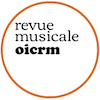Appel à contributions pour un numéro spécial de BACH. Journal of the Riemenschneider Bach Institute.
Rédaction en chef : Christina Fuhrmann.
« BACH: Journal of the Riemenschneider Bach Institute announces a special issue in September 2026 on the ways in which Bach and his music have been represented visually. The only extant visual records of Bach are portraits, autograph manuscript scores and letters, and contemporary publications, but Bach has been “seen” in multiple ways. Connections have been drawn between his music and art and architecture, both of his time and later, as in Douglas R. Hofstadter’s Gödel, Escher, Bach (1979). Bach has been memorialized in statues, museums, and 3D reconstructions. Visual artists have created works inspired by Bach in a variety of media, including Paul Klee, Wassily Kandinsky, and Hans Richter. Multimedia presentations often accompany concerts of his works. Visualizations have also been used to explain and analyze Bach’s works, from Schenkerian graphs to YouTube videos. While Bach has often been studied solely in terms of abstract sound, there are multiple ways of “seeing” Bach.
We invite scholars of music, art, architecture, and multimedia to submit abstracts that explore the myriad ways in which Bach’s music has been “seen.” Articles might explore questions such as the following, although this list is not comprehensive:
- How have visual artists responded to Bach’s music? How do their works enhance, obscure, or offer a new understanding of Bach?
- What are specific ways artists have theorized about connections between Bach’s pieces and color, visual rhythm, or structure?
- What comparisons can be made between Bach’s music and art and architecture, whether of his own time or later?
- How has Bach been represented in portraits, statues, museums, or websites? What do these representations reveal about both Bach and his reception?
- What can we learn from the study of the visual aspects of Bach’s scores (autograph, manuscript, printed, and/or annotated)?
- What role have visualizations played in musical analyses of Bach?
- How have visual elements been utilized pedagogically to increase understanding of Bach’s music, whether in the classroom or in public musicology and theory?
- How have visual interpretations contributed to Bach reception, helping Bach speak to a new generation and/or respond to social issues of the day?
Send an abstract of ca. 500 words and a bio to bachjournal -at- bw.edu by 15 January 2025. Authors of accepted abstracts should complete their articles by February 2026. Completed articles should be between 7000 and 12,000 words. »
Date limite de soumission : 15 janvier 2025.
Pour plus de détails : cliquez ici.

